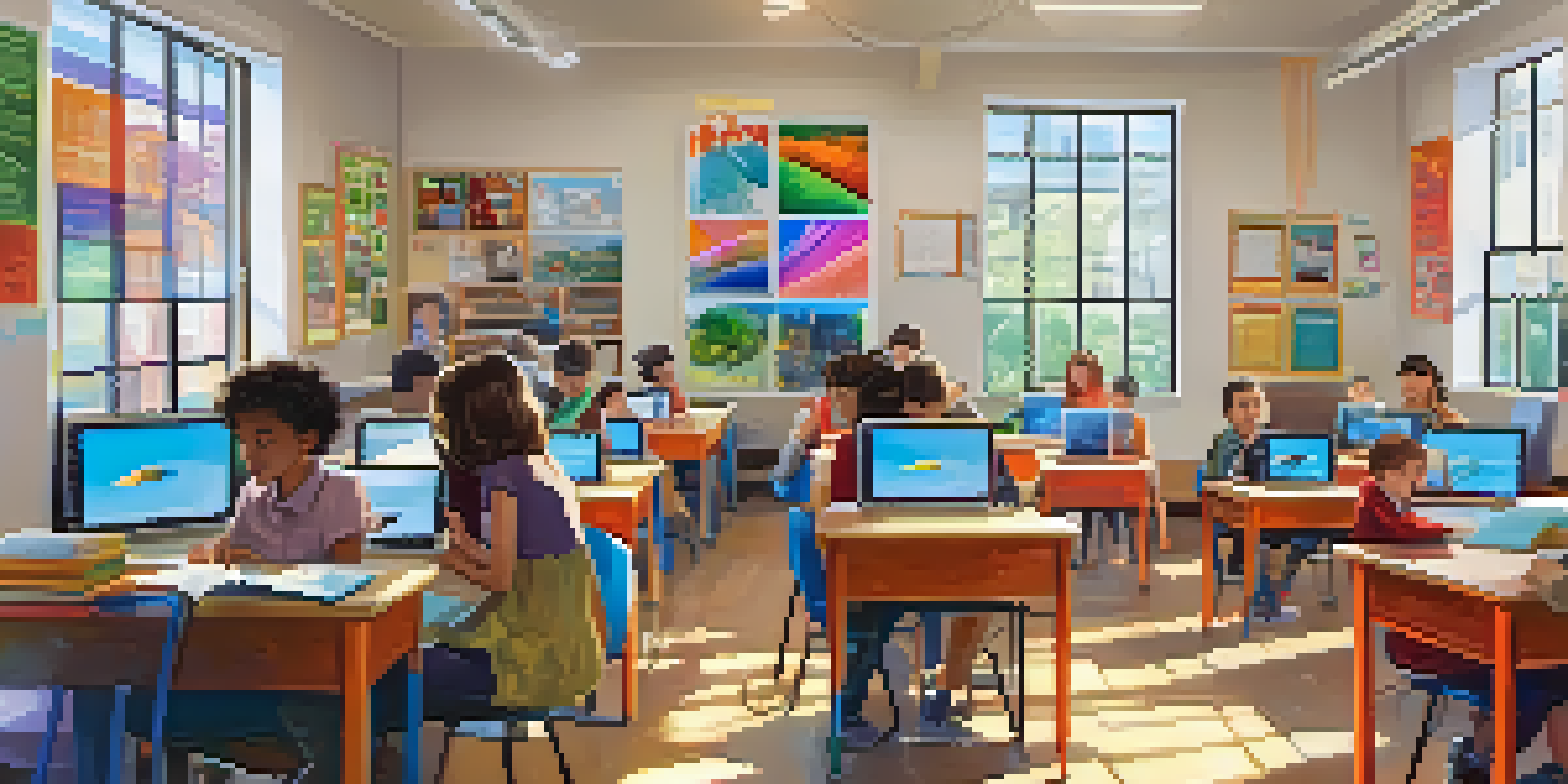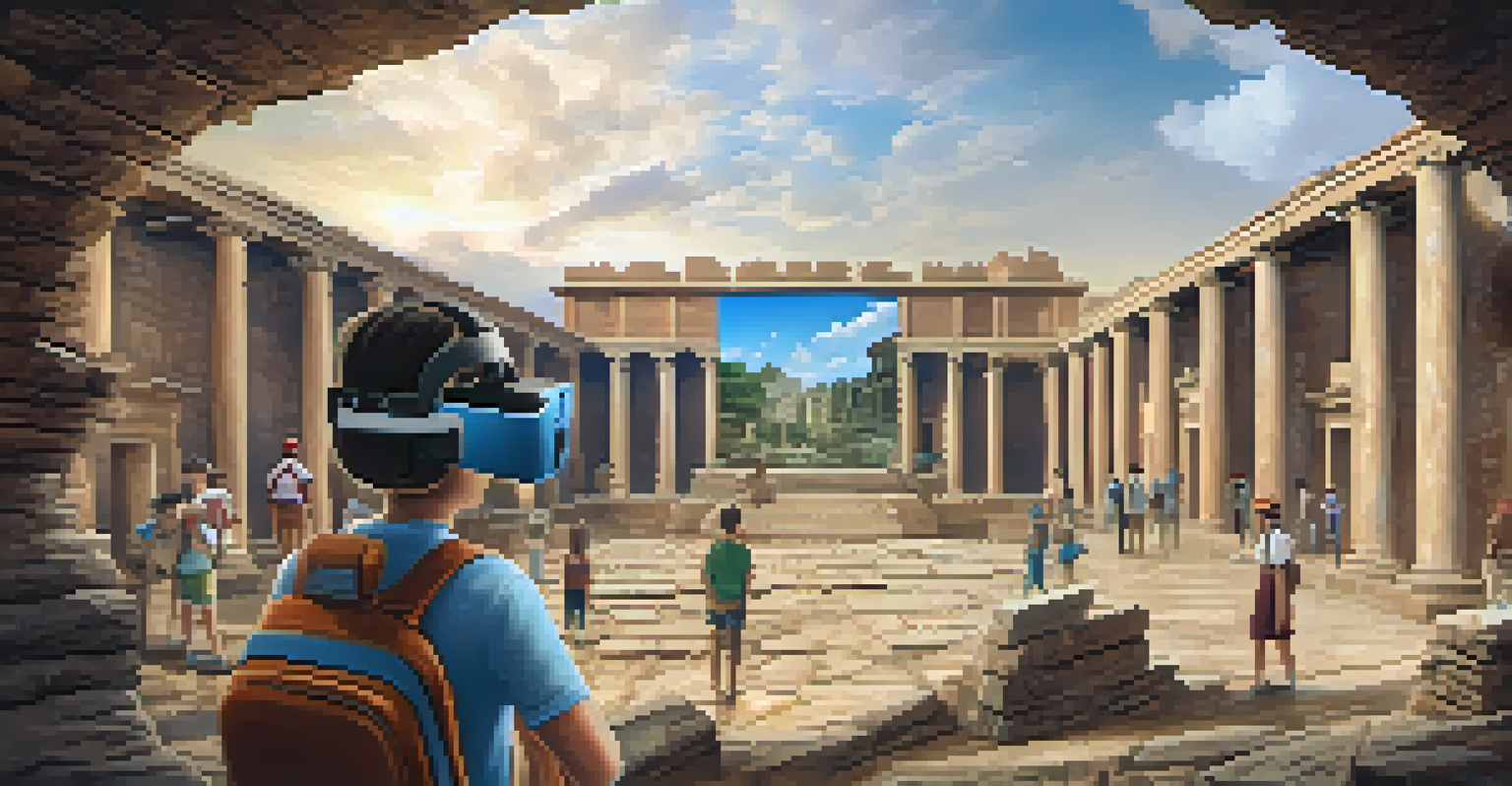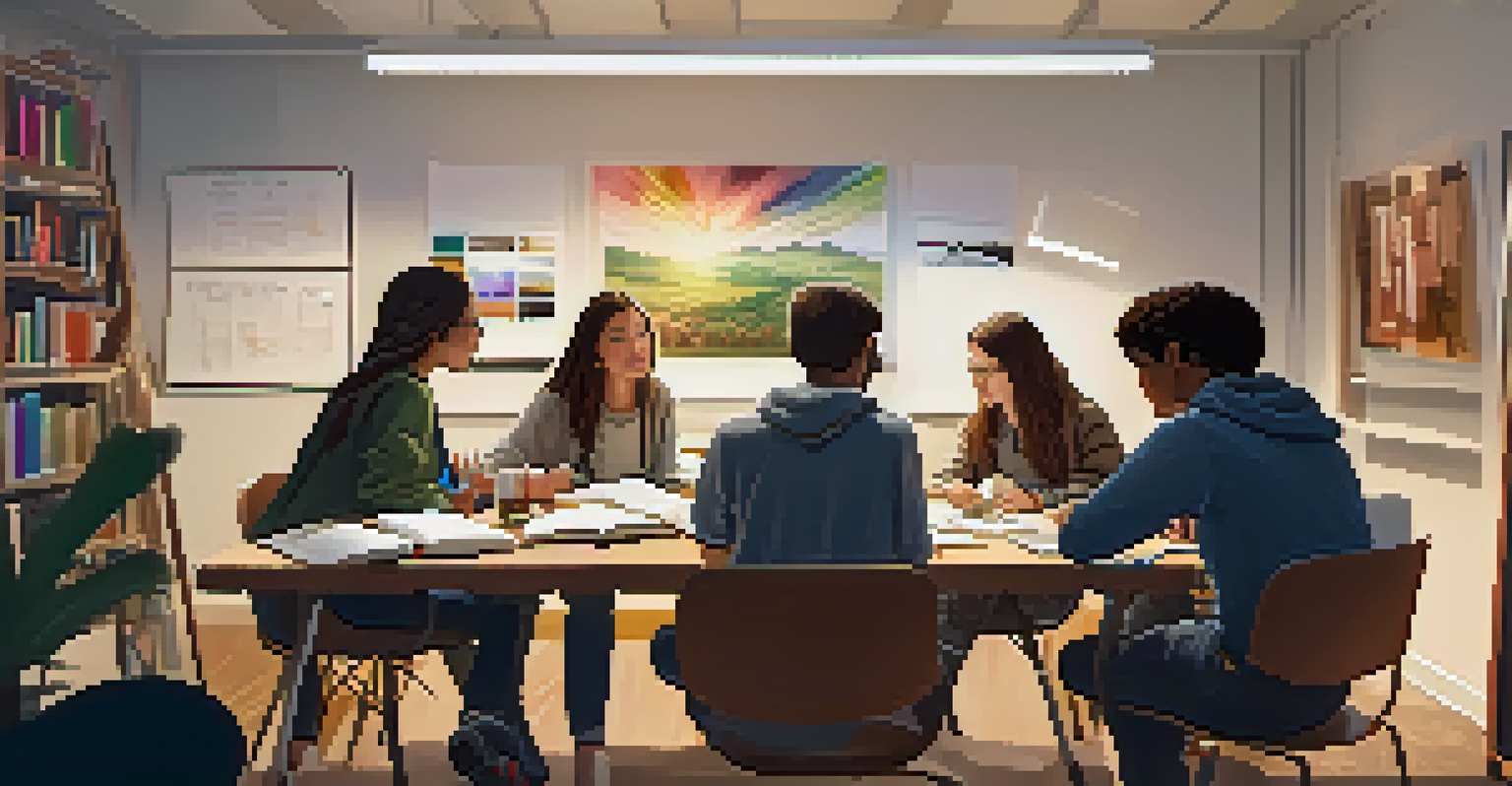Transmedia Learning: Strategies for Remote Education

Understanding Transmedia Learning in Education
Transmedia learning involves the use of multiple media platforms to create a rich learning experience. Imagine telling a story that unfolds across books, videos, games, and even social media—this is how transmedia can transform education. By leveraging various formats, educators can cater to different learning styles and preferences, making lessons more engaging and effective.
Education is not the filling of a pail, but the lighting of a fire.
This approach empowers students to interact with content in a more dynamic way. For example, a history lesson might include reading a textbook, watching a documentary, and participating in an interactive online game. Each medium reinforces the others, creating a cohesive understanding of the subject matter.
In remote education, transmedia learning can bridge the gap created by physical distance. Students can explore topics through diverse channels, fostering a sense of community and collaboration, even when they’re not in the same room.
Key Benefits of Transmedia Learning
One of the standout benefits of transmedia learning is its ability to enhance engagement. When students can choose how they interact with material—whether through video, quizzes, or podcasts—they're more likely to stay focused and interested. This choice fosters a sense of ownership in their learning journey.

Additionally, transmedia learning supports deeper understanding and retention. By encountering the same concept through multiple formats, students can connect dots more easily. For instance, a science lesson might involve reading about a phenomenon, viewing a related experiment online, and then discussing it in a virtual class, reinforcing their knowledge.
Engagement Through Multiple Media
Transmedia learning enhances student engagement by allowing them to choose how they interact with educational content across various platforms.
Moreover, this approach promotes critical thinking and creativity. As students navigate different media, they learn to evaluate sources, synthesize information, and express their ideas in varied formats. This skill set is invaluable, not just for academics but also for real-world problem-solving.
Incorporating Technology in Transmedia Learning
The integration of technology is essential in transmedia learning, especially in remote education. Tools like learning management systems, video conferencing, and interactive apps enable educators to create a seamless experience. For example, platforms like Google Classroom or Microsoft Teams can serve as hubs for diverse content.
The more that you read, the more things you will know. The more that you learn, the more places you'll go.
Educators can curate resources from various platforms, such as YouTube videos, podcasts, and articles, to create a comprehensive lesson plan. This variety not only keeps students engaged but also allows them to explore topics in depth. For instance, after watching a documentary, students might participate in a discussion on a forum, deepening their understanding.
Additionally, technology allows for immediate feedback and assessment. Interactive tools like quizzes and polls can be integrated into lessons, providing instant insights into student comprehension. This real-time interaction fosters a more responsive and adaptive learning environment.
Creating Collaborative Learning Experiences
Transmedia learning naturally lends itself to collaboration, which is vital in remote education. Platforms like Padlet or collaborative documents allow students to work together on projects, sharing ideas and resources across distances. This teamwork not only enhances learning but also builds essential communication skills.
For instance, students could collaborate on a digital presentation that incorporates videos, images, and text from various sources. Each member can contribute from their own location, fostering a sense of unity despite physical separation. This shared experience can be incredibly motivating and rewarding.
Collaboration in Remote Learning
This approach fosters collaboration among students, enabling them to work together on projects and share ideas, even when physically apart.
Moreover, collaborative projects can help students learn from one another. By discussing different perspectives and approaches, they can expand their understanding and develop critical thinking skills. This peer-to-peer interaction is a powerful element of transmedia learning.
Designing Engaging Transmedia Content
Creating effective transmedia content requires thoughtful design that considers the target audience. Educators should aim to blend educational value with entertainment, ensuring that content is not only informative but also enjoyable. For example, using gamification elements can make learning feel more like a fun challenge than a chore.
When designing lessons, it's important to consider how different media can complement each other. A well-structured lesson might start with a video to introduce a topic, followed by an interactive quiz to assess understanding, and concluding with a discussion forum. This flow helps maintain engagement and reinforces learning points.
Furthermore, incorporating storytelling techniques can enhance the appeal of educational content. Narratives can make dry subjects more relatable and memorable, allowing students to connect emotionally with the material. This connection can lead to deeper learning and a more meaningful educational experience.
Assessment Strategies for Transmedia Learning
Assessing student understanding in a transmedia learning environment can be innovative and diverse. Rather than relying solely on traditional tests, educators can incorporate various assessment methods that reflect the multi-faceted nature of transmedia. For instance, project-based assessments can allow students to showcase their understanding through creative presentations.
Pulse-checks throughout the learning process, like polls or quick quizzes, can provide insights into student comprehension. This ongoing assessment helps educators adjust their teaching strategies in real time, ensuring that all students are keeping up. It’s a more holistic approach to evaluation.
Innovative Assessment Techniques
Transmedia learning encourages diverse assessment methods that reflect students' understanding through creative projects and ongoing feedback.
Additionally, self-assessment and peer review can empower students to take ownership of their learning. By reflecting on their contributions and understanding, they become more engaged and accountable. This approach not only supports learning but also helps students develop critical evaluation skills.
Future Trends in Transmedia Learning
As technology continues to evolve, so does the potential for transmedia learning in remote education. Emerging technologies, like virtual reality (VR) and augmented reality (AR), are set to revolutionize how students interact with content. Imagine exploring ancient ruins through a VR experience while simultaneously reading about them in a textbook.
Moreover, the rise of artificial intelligence (AI) can personalize learning experiences even further. AI-powered platforms can adapt content based on individual student needs, creating a tailored learning path that enhances engagement and understanding. This level of customization could be a game-changer in education.

Finally, the emphasis on lifelong learning will push the boundaries of transmedia learning. As the job market evolves, individuals will need to continually acquire new skills. Transmedia learning can facilitate this ongoing education, providing flexible and engaging pathways for learning throughout one’s life.